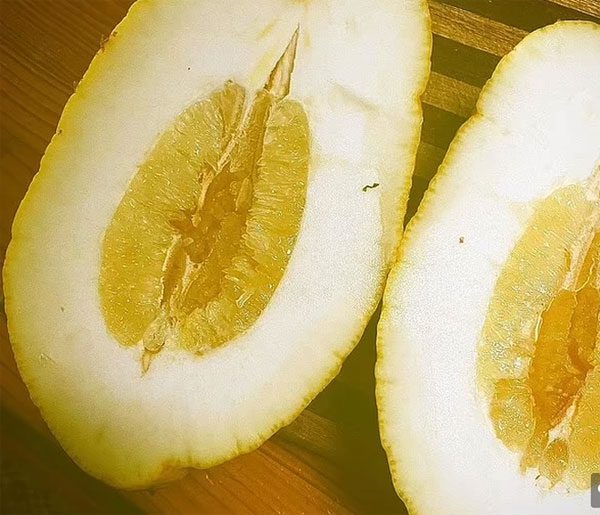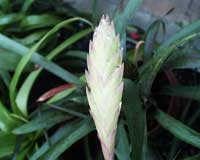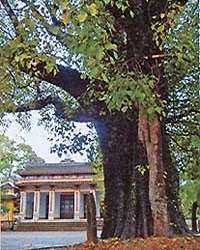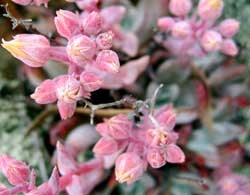Recently, a couple from East Fremantle, south of Perth, Western Australia, accidentally discovered an unusually large lemon weighing about 2.6 kg in their garden.

The unusual lemon is much larger than a regular lemon.
When placed next to a traditional yellow lemon, the size difference is quite apparent. Additionally, this “lemon” has an odd shape, being elongated with a rough skin texture.
Upon cutting the lemon in half, the interior surprised its owner.
The inside has a very thick rind, while the pulp occupies about one-third of the volume and is quite juicy. Notably, the arrangement of the segments seems different from that of traditional yellow lemons.
When people think of lemons, they typically associate them with a distinct sour taste. However, this lemon has a surprisingly sweet flavor; while the segments are few, they are very fragrant and juicy.

The inside of the lemon when cut in half
The lemon’s owner mentioned that she used it in a salad after realizing it was not suitable for juicing. “It’s very sweet, so I peeled it and made a salad with zucchini and green olives, with a lemon dressing.“
Photos of the unusual lemon shared on Instagram attracted a lot of attention.
Some people speculated that it could be an Aoerosa lemon – a hybrid between a citron and a regular lemon.
Although not cultivated for commercial purposes, it is grown by gardening enthusiasts for decorative purposes and can be used as a substitute for lemons in making jams, baked goods, and other recipes.
However, there are also opinions suggesting that this may not be an ordinary lemon but rather a variety belonging to the citrus family.
The True Origin of the Unusual Lemons
According to Leimone Waite, an experienced gardener, there are several reasons why these lemons appear unusual when discovered on trees.
One of the most common reasons is that they are not actually lemons, but a type of grafted fruit belonging to the citrus family, which was once popular due to its resistance to cold and drought.
However, this variety has been gradually phased out due to its sensitivity to the Citrus Tristeza Virus (CTV), which causes rapid decline in crops, Waite noted. Interestingly, when this plant bears fruit, it resembles a typical citrus fruit, but can be round or elongated, with a very rough surface and thick skin.
They ripen to an orange color, but under certain climatic conditions, many fruits turn yellow when ripe. Because their fruit is often sour, most people mistake them for lemons. However, some fruits can be incredibly sweet when ripe.

Mutated lemons with unusual shapes.
Another reason why lemon trees may produce oddly shaped fruits could be due to pests that attack citrus buds.
The website of the Integrated Pest Management Program at the University of California lists certain beetles on citrus as major pests for lemons, especially varieties grown in coastal areas.
This beetle feeds on the young shoots of the plant, killing them or causing deformities in flowers and fruits. Citrus fruits damaged by this beetle can take on very strange shapes, sometimes resembling bizarre “fingers.”





















































